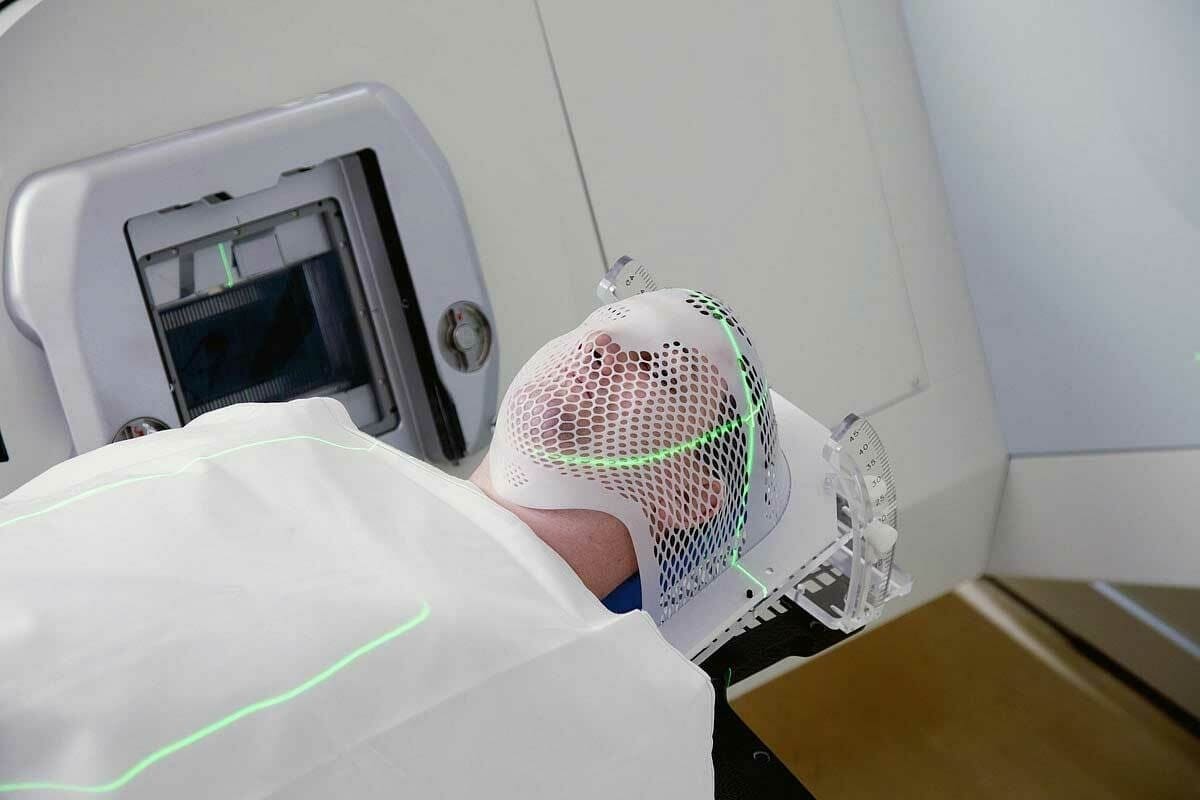Last Updated on November 26, 2025 by Bilal Hasdemir

It’s important to know the differences between cardiac catheterization, angioplasty, and stenting for your heart health. At Liv Hospital, we offer personalized care and support. We help you understand each step of your treatment.
Cardiac catheterization is used to diagnose heart issues. On the other hand, angioplasty is a treatment that might include stent placement. Our cardiac specialists are here to guide you through these choices.
Key Takeaways
- Cardiac catheterization is mainly for diagnosis.
- Angioplasty is a treatment that might need a stent.
- Liv Hospital focuses on patient-centered care for heart procedures.
- Knowing the differences helps you make informed choices.
- We offer personalized support for heart treatments.
The Cardiovascular Intervention Landscape

Every year, over a million cardiac catheterizations and angioplasty procedures are done. This shows how big and complex the field of cardiovascular intervention is. We will look at the global numbers of cardiac procedures and how treatments for heart disease have changed.
Global Statistics on Cardiac Procedures
Cardiovascular diseases are a big problem worldwide. They make people need more cardiac catheterizations and angioplasties. The number of these procedures has gone up, showing more heart disease and better treatments.
The increase in cardiac procedures shows how important good heart care is. As people get older and lifestyles change, heart disease will likely keep going up. This means we need to keep improving our ways of diagnosing and treating it.
Evolution of Heart Disease Treatments
Treatments for heart disease have changed a lot. We’ve moved from simple cardiac catheterizations to advanced angioplasty and stenting. This shift is towards treatments that are less invasive but very effective.
Technology advancements have been key in this change. They’ve helped doctors give patients safer and better treatments. For example, drug-eluting stents have cut down on restenosis, making angioplasty outcomes better for patients.
Understanding the world of cardiovascular interventions is vital. It helps doctors and patients make better choices about care. This knowledge is essential for improving heart disease treatment.
What is Cardiac Catheterization?

Cardiac catheterization is key in diagnosing heart issues. It gives detailed images of the heart’s inside. Doctors use it to spot problems.
Diagnostic Purpose
This procedure helps find heart conditions like coronary artery disease. A thin tube, called a catheter, is inserted into an artery. Contrast dye is then used, and X-rays are taken to see the heart’s inside.
Cardiac catheterization has many uses:
- To see the coronary arteries and find blockages.
- To check how well the heart pumps and if it’s working right.
- To find structural heart defects, like holes or valve problems.
Step-by-Step Procedure Overview
The procedure happens in a special lab. Here’s what happens:
- The area where the catheter goes is numbed.
- A small cut is made, and the catheter is inserted.
- The catheter is moved to the heart with X-rays.
- Contrast dye is injected, and X-rays are taken to see the heart’s inside.
- The catheter is taken out, and the cut is closed.
When Doctors Recommend a Cardiac Cath
Doctors suggest cardiac catheterization for several reasons:
- For symptoms like chest pain or shortness of breath.
- When non-invasive tests show something’s off.
- For suspected heart defects or structural issues.
Understanding cardiac catheterization helps patients see its value in heart care. It’s a vital step compared to other treatments like angioplasty and stenting.
Angioplasty: The Interventional Treatment
Angioplasty is a key treatment that opens narrowed arteries. This helps blood flow better to the heart. It’s often done with cardiac catheterization, which we talked about before.
How Balloon Angioplasty Opens Blocked Arteries
Balloon angioplasty uses a small balloon to widen arteries. The balloon pushes aside plaque and stretches the artery. This improves blood flow and lessens heart disease symptoms.
The process involves: a catheter with a balloon tip is inserted into the narrowed artery. The balloon is then inflated to compress the plaque. After that, it’s deflated to let blood flow better.
Types of Angioplasty Techniques
There are several angioplasty techniques:
- Balloon angioplasty, as described above.
- Stent placement, where a small mesh tube is placed to keep the artery open.
- Atherectomy, a procedure that involves removing plaque from the artery.
Each method has its own uses and benefits. The choice depends on the patient’s specific needs.
From Diagnosis to Treatment: When Catheterization Leads to Angioplasty
Cardiac catheterization is often used to see the coronary arteries. If a blockage is found, angioplasty can then treat it right away.
This quick move from diagnosis to treatment is a big plus of cardiac catheterization and angioplasty. It means faster treatment, fewer extra procedures, and shorter hospital stays.
Understanding Cardiac Stents
Cardiac stents are small, mesh-like devices that help keep arteries open. They are used with cardiac catheterization and angioplasty. This ensures the artery stays open, lowering the chance of it narrowing again.
The Function and Purpose of Stents
Cardiac stents support the artery walls, keeping them open after angioplasty. They improve blood flow to the heart, easing symptoms like chest pain and shortness of breath. They are very helpful for those with complex heart disease.
Key Benefits of Cardiac Stents:
- Improved blood flow to the heart muscle
- Reduced symptoms of coronary artery disease
- Minimally invasive procedure
Bare-Metal vs. Drug-Eluting Stents
There are two main types of cardiac stents: bare-metal stents (BMS) and drug-eluting stents (DES). Bare-metal stents are made of metal mesh and support the artery. Drug-eluting stents have a drug coating to prevent the artery from narrowing again.
| Characteristics | Bare-Metal Stents | Drug-Eluting Stents |
| Material | Metal mesh | Metal mesh with drug coating |
| Restenosis Rate | Higher | Lower |
| Antiplatelet Therapy Duration | Shorter (1-3 months) | Longer (6-12 months) |
The Stent Placement Procedure
The stent placement procedure happens during cardiac catheterization. The doctor uses a balloon to widen the artery. Then, they place the stent, which expands to fit the artery walls. The whole process is guided by imaging to ensure it’s done right.
Understanding cardiac stents helps patients grasp their treatment options for heart disease. Our team is dedicated to giving full care and advice during treatment.
Cardiac Cath vs Stent: Primary Differences
Patients need to know the differences between cardiac cath and stent procedures. Both are used to treat heart disease, but in different ways. They have different uses and characteristics.
Diagnostic vs. Therapeutic Purposes
Cardiac catheterization is mainly for diagnosis. It lets doctors see the heart’s inside and find problems. Stenting, on the other hand, is for treatment. It uses a stent to keep arteries open.
Diagnostic purposes of cardiac cath include:
- Visualizing coronary artery disease
- Measuring pressures within the heart chambers
- Assessing valve function
Therapeutic purposes of stenting include:
- Restoring blood flow to the heart muscle
- Relieving symptoms of angina
- Reducing the risk of a heart attack
Equipment and Materials Used
Cardiac catheterization uses catheters, guidewires, and contrast agents. Stenting requires stents, balloon catheters, and guidewires.
| Procedure | Primary Equipment |
| Cardiac Catheterization | Catheters, Guidewires, Contrast Agents |
| Stenting | Stents, Balloon Catheters, Guidewires |
Patient Selection Criteria
Choosing between cardiac cath and stent depends on several factors. These include the disease’s severity, symptoms, and overall health. A cardiac cath is often for those with suspected disease or who need a diagnosis. Stenting is for those with big blockages causing symptoms or at high risk of a heart attack.
Understanding cardiac cath vs stent is key. Cardiac cath is a diagnostic tool. It might lead to stenting if a big blockage is found that needs immediate treatment.
The Top 5 Differences Between Cardiac Catheterization, Angioplasty, and Stenting
The world of cardiology is complex, but knowing the differences between cardiac catheterization, angioplasty, and stenting is key. These procedures are related but have unique uses and effects. We’ll cover the top 5 differences to help patients and their families make informed choices about heart health.
Difference #1: Purpose – Diagnosis vs. Treatment
Cardiac catheterization is used for diagnosis, letting doctors see the heart’s inner workings. Angioplasty and stenting, on the other hand, aim to fix blocked or narrowed arteries. Angioplasty uses a balloon to widen the artery, while stenting places a mesh tube to keep it open.
A leading cardiologist once said, “Cardiac catheterization is like an X-ray of the heart’s blood vessels. Angioplasty and stenting are like plumbing repairs to fix blockages.”
Difference #2: Procedural Complexity and Duration
The complexity and time needed for these procedures vary. Cardiac catheterization is simpler and quicker, taking 30 minutes to an hour. Angioplasty and stenting are more complex and take longer, often 1-2 hours or more, depending on the blockages and procedure difficulty.
- Cardiac catheterization: 30 minutes to 1 hour
- Angioplasty: 1-2 hours
- Stenting: 1-2 hours or more
Difference #3: Recovery Time and Post-Procedure Care
Recovery times also vary. Cardiac catheterization has a shorter recovery, with most patients back to normal in a day or two. Angioplasty and stenting require a longer recovery, with patients advised to avoid heavy lifting and strenuous activities for several days to a week.
Key recovery considerations include:
- Monitoring for bleeding or complications at the catheter site
- Following a specific medication regimen
- Avoiding strenuous activities as advised by the doctor
Difference #4: Risks and Possible Complications
All three procedures have risks, but the types and severity vary. Cardiac catheterization risks include bleeding, infection, and allergic reactions to contrast dye. Angioplasty and stenting also have risks, such as blood clots forming around the stent and the artery closing again (restenosis).
Understanding these differences is vital for patients to make informed decisions. By knowing the distinct purposes, complexities, recovery needs, and risks of cardiac catheterization, angioplasty, and stenting, patients can better navigate their treatment options. This way, they can work closely with their healthcare providers to achieve the best outcomes.
Patient Experience and Recovery Comparison
It’s important to know what to expect when you have cardiac catheterization, angioplasty, or stenting. These procedures are lifesaving but can be scary. By comparing experiences and recovery times, we can better prepare patients.
Before, During, and After Cardiac Catheterization
Cardiac catheterization is a test that checks the heart’s arteries. Before it starts, you might get local anesthesia and sedation to relax. The doctor uses a catheter to see if there are blockages in your arteries.
After the test, you’ll be watched for a few hours. Most people go home the same day. But you should avoid heavy lifting and hard activities for a few days. One patient said, “The recovery was quick; I was back to normal in a couple of days.”
The Angioplasty and Stenting Experience
Angioplasty and stenting are often done together. Angioplasty opens blocked arteries, and stenting keeps them open. The process is similar to cardiac catheterization, but it takes longer. Stent placement adds more complexity.
Patients with angioplasty and stenting might need more time to recover. They often stay overnight in the hospital to watch for complications. A cardiologist said, “Angioplasty and stenting are safe, but careful post-procedure care is key.”
“The biggest challenge after angioplasty was not the procedure itself, but adjusting to the new medications and lifestyle changes.” – Patient testimonial
.Recovery Timelines and Activity Restrictions
Recovery times vary for these procedures. Cardiac catheterization has the shortest recovery time, with most people back to normal in a few days. Angioplasty and stenting take a bit longer, usually 3-7 days.
- Cardiac Catheterization: 1-3 days of recovery
- Angioplasty and Stenting: 3-7 days of recovery
After these procedures, you’ll need to avoid heavy lifting and hard exercise. It’s also important to follow a heart-healthy lifestyle. This includes a good diet and regular exercise to support your recovery and heart health.
Innovations and Advancements in Cardiac Interventions
Cardiac interventions have seen big changes in recent years. These changes have made care better for patients. We are in a time of big change in heart care, thanks to new tech and a better understanding of heart disease.
Newest Generation Stent Technologies
New stent technologies have been key in improving heart care. Drug-eluting stents are a big deal because they lower the chance of the artery getting blocked again. They do this by releasing medicine that stops cells from growing too much. Some new stents include:
- Bioresorbable stents that break down over time, which might help avoid long-term problems.
- Stents with new coatings that work better with the artery walls.
- Next-generation drug-eluting stents with better drugs and ways to release them.
Minimally Invasive Approaches
Minimally invasive procedures have changed heart care a lot. They make recovery times shorter and lower the risk of problems. Techniques like transcatheter aortic valve replacement (TAVR) and percutaneous coronary intervention (PCI) are used more often. These methods:
- Use smaller cuts, which means less damage and faster healing.
- Lead to less pain after surgery, making patients happier and more comfortable.
- Let patients get back to their normal lives faster, which is great for those who are active.
Future Directions in Cardiovascular Care
Looking ahead, exciting things are coming for heart care. Research into stem cell therapy and gene therapy could really help treat heart disease. Also, new uses of artificial intelligence and imaging technologies will likely make diagnosing and treating hearts even better.
We expect these new things to keep making heart care safer and more effective. By keeping up with these advances, we can give our patients the best care possible.
Conclusion: Making Informed Decisions About Cardiac Care
It’s key to know the differences between cardiac catheterization, angioplasty, and stenting for those facing heart treatments. We’ve looked into the unique goals and methods of cardiac cath vs stent and angioplasty vs catheterization. This helps clear up these important heart care choices.
Choosing between cardiac catheterization and angioplasty depends on the patient’s needs and how serious their heart issue is. Understanding these treatments helps patients talk better with their doctors.
We suggest talking to your doctor to find the right treatment for you. This way, you can make smart choices about your heart care. This leads to better health results.
FAQ
What is the difference between cardiac catheterization and angioplasty?
Cardiac catheterization is a test to see the heart’s inside. It checks the chambers, valves, and blood vessels. Angioplasty is a treatment that uses a balloon to open blocked arteries.
What is the purpose of stenting in angioplasty?
Stenting helps keep the artery open. It uses a small, mesh-like device (stent) that expands to support the artery walls. This prevents the artery from narrowing again.
How do I prepare for a cardiac catheterization or angioplasty procedure?
Before the procedure, you might need to fast and stop certain medications. You’ll also need someone to drive you home. Your doctor will give you specific instructions.
What are the risks associated with cardiac catheterization, angioplasty, and stenting?
These procedures are usually safe but can have risks. These include bleeding, infection, and allergic reactions to contrast dye. Your doctor will talk about the risks and benefits with you.
How long does it take to recover from cardiac catheterization, angioplasty, or stenting?
Recovery times vary. Most people can get back to normal in a few days to a week. Your doctor will tell you what to do and what not to do after the procedure.
What is the difference between bare-metal and drug-eluting stents?
Bare-metal stents are made of metal and support the artery. Drug-eluting stents release medication to prevent cell growth and reduce narrowing.
Can I undergo cardiac catheterization or angioplasty if I have other health conditions?
Your doctor will check your health and decide the best treatment. Some health conditions might need special care or different treatments.
How do I know if I need cardiac catheterization, angioplasty, or stenting?
Your doctor will look at your symptoms, medical history, and test results. They will decide the best treatment for you.
What are the latest advancements in cardiac interventions?
New stent technology, minimally invasive methods, and imaging techniques have improved treatments. Your doctor can tell you about the latest options.
Can I travel after undergoing cardiac catheterization, angioplasty, or stenting?
It’s best to avoid traveling for a while after the procedure. Your doctor will tell you when it’s safe to travel and what precautions to take.
How do cardiac catheterization, angioplasty, and stenting compare in terms of procedural complexity and duration?
Cardiac catheterization is simpler and shorter than angioplasty and stenting. These procedures need more time and skill.
What is the role of cardiac catheterization in diagnosing heart conditions?
Cardiac catheterization lets doctors see the heart’s inside. It helps diagnose problems like coronary artery disease and valve issues.
References
- Centers for Disease Control and Prevention. (2024). Coronary artery disease facts. National Center for Chronic Disease Prevention and Health Promotion. Retrieved from https://www.cdc.gov/heartdisease/coronary_ad.htm






